
It’s important not to lose momentum while school is out of session. There’s no reason to worry about the summer slide when there are engaging summer activities for students. Use those months to accelerate learning and get students ready for fall. Whether it’s enrichment, intervention, or a STEM-focused support, ExploreLearning Gizmos have what your students need with math and science activities for summer.
Support summertime student engagement and learning
Summer school curriculums often include enrichment and intervention tools. The trick is finding activities with student engagement in mind because it is vacation time, after all. STEM summer programs provide many opportunities for teaching math and science. With Gizmos inquiry-based activities, there are countless ways to create moments for students to explore, discover, and apply new concepts as they learn by doing.
Because Gizmos are open-ended and come with customizable lesson materials, teachers can use Gizmos in many ways to help students with particular skills. Gizmos are ready for any stage of the learning process—topic introduction, application, assessment, or review. With multiple instructional models for whole class, small group, and individual instruction, students get what they need to investigate and explore STEM concepts.
Why is it important to keep students engaged during the summer?
The summer slide is real. Teachers know that students who aren’t mentally engaged throughout the summer months can lose some of the knowledge they gained during the school year. That’s why summer learning is so critical. Summer activities don’t just help with the retention and extension of concepts. They also add more structure to summer schedules, keeping kids more focused, motivated, and engaged.
Summer education tools: Using Gizmos for enrichment, intervention, and STEM
Robyn Ullah, Solutions Specialist, and Emily Reichbach, Senior VLC Specialist, with the ExploreLearning Professional Development team, shared some important reasons for summer learning with Gizmos:
- Learning recovery and re-teaching
- Pre-loading and introducing content for the next grade level or course
- Supporting vocabulary development and literacy skills
- Providing students with enrichment and real-world exploration opportunities
Ullah and Reichbach noted that Gizmos offer Teacher Guide Discussion Questions and Task Cards that can be used to set the stage with open-ended, intriguing questions. Teachers could post questions on shared documents, Learning Management Systems, or even social media if that fits within district guidelines. Ask students to respond based on prior knowledge. Then, follow up by sharing a Task Card to challenge students with a quick Gizmos activity to explore the question further.
How about using phenomena-based learning for summer school enrichment or STEM intervention programs? Introduce a summer-related phenomenon, maybe through a video or literature book, and ask students what they notice or wonder. Take the next steps with a Gizmo that allows students to develop a question, conduct an investigation, and share photos or screenshots of their data.
Enrich summer school and learning with Gizmos today
Take advantage of the summer vibes. For STEM learning with Gizmos interactive online simulations that have summertime connections, take a look at these options.
Coastal Winds and Clouds Gizmo
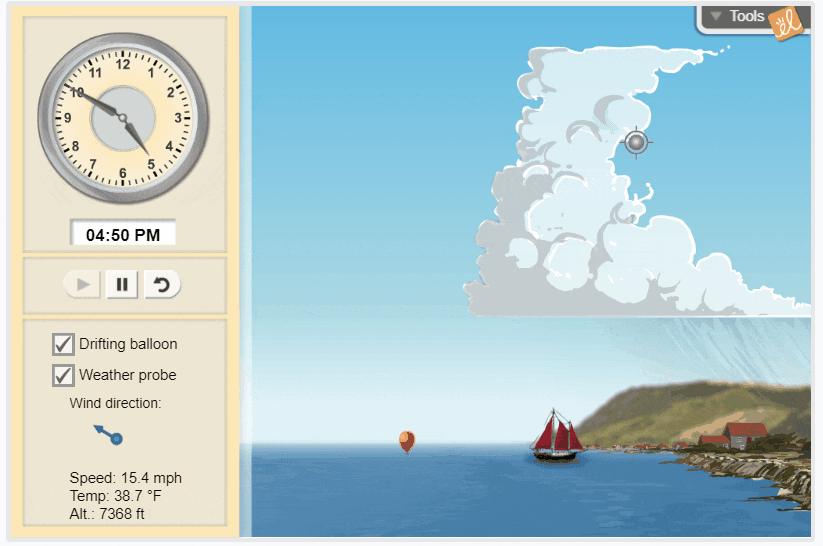
Coastal Winds and Clouds Observe daily weather conditions in a coastal region. Measure temperatures and wind speeds at any location and use this data to map convection currents that form during the day and night. Explain the origin of land breezes and sea breezes. Our video will get you started. Take a look.
Growing Plants Gizmo
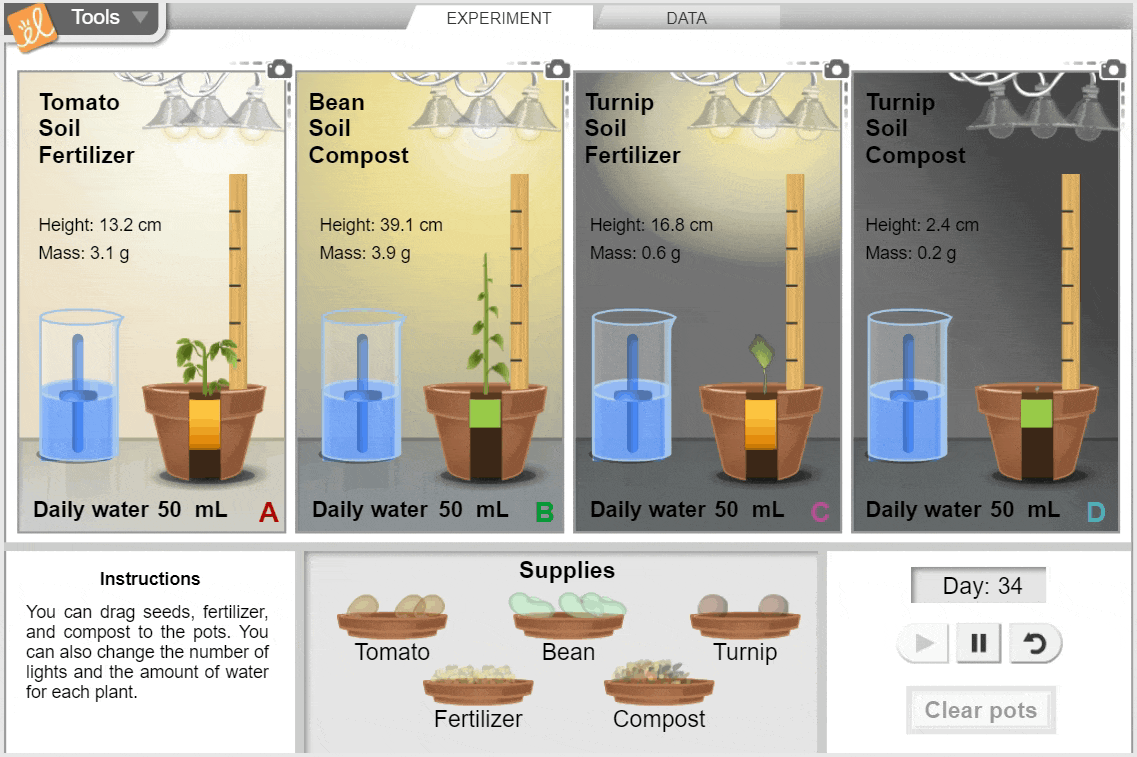
Growing Plants Investigate the growth of three common garden plants: tomatoes, beans, and turnips. You can change the amount of light each plant gets, the amount of water added each day, and the type of soil the seed is planted in. Observe the effect of each variable on plant height, plant mass, leaf color, and leaf size. Determine what conditions produce the tallest and healthiest plants. Height and mass data are displayed on tables and graphs.
Roller Coaster Physics Gizmo
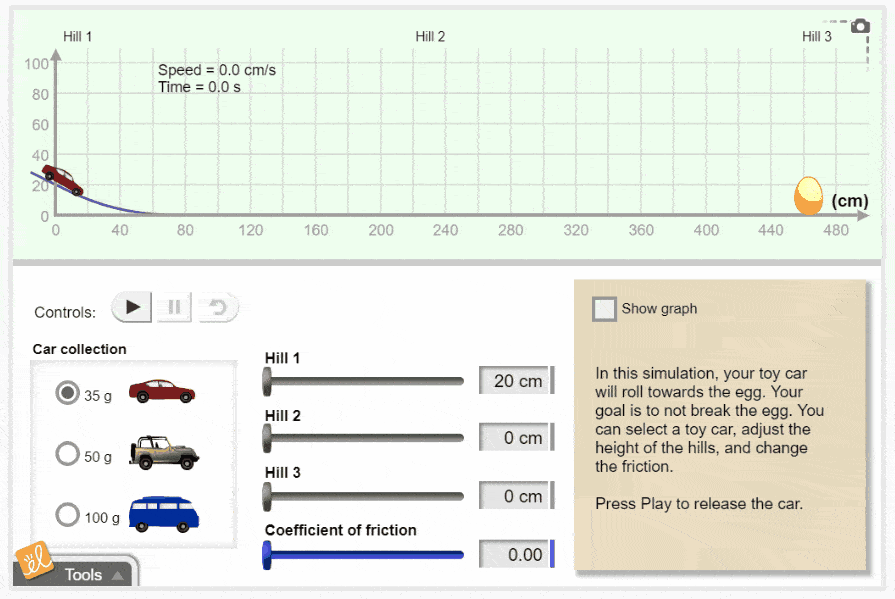
Roller Coaster Physics Adjust the hills on a toy car roller coaster and watch what happens as the car careens toward an egg (that can be broken) at the end of the track. The heights of three hills can be manipulated, along with the mass of the car and the friction of the track. A graph of various variables of motion can be viewed as the car travels, including position, speed, acceleration, potential energy, kinetic energy, and total energy.
River Erosion Gizmo
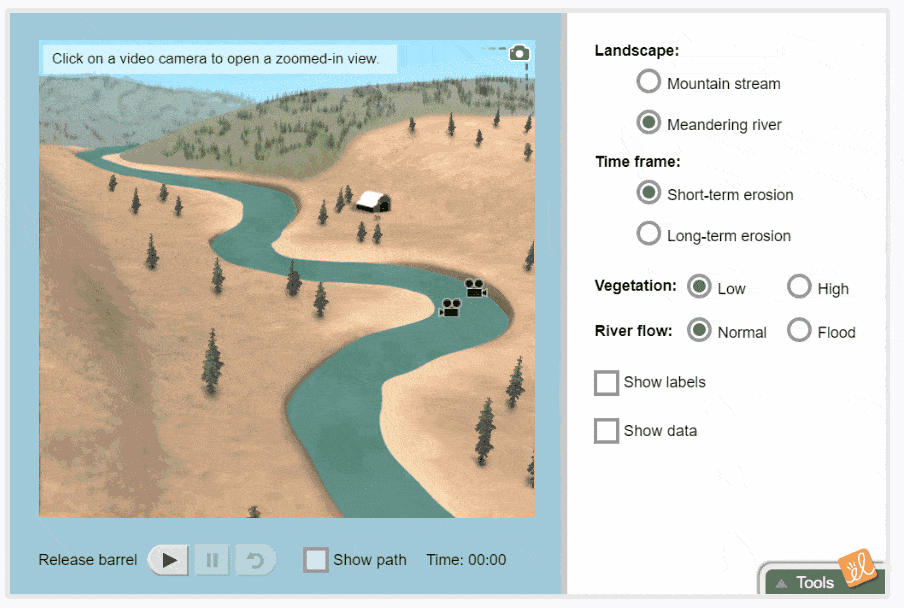
River Erosion Explore how river erosion affects landscapes in the short term and over long periods of time. Describe the features of mountain streams and meandering rivers, and use a floating barrel to estimate current speed. Witness the changes that occur as mountain streams erode downward and meandering rivers erode from side to side. If you’re ready to dive in, there’s a video full of tips and strategies for this Gizmo.
Road Trip (Problem Solving) Gizmo
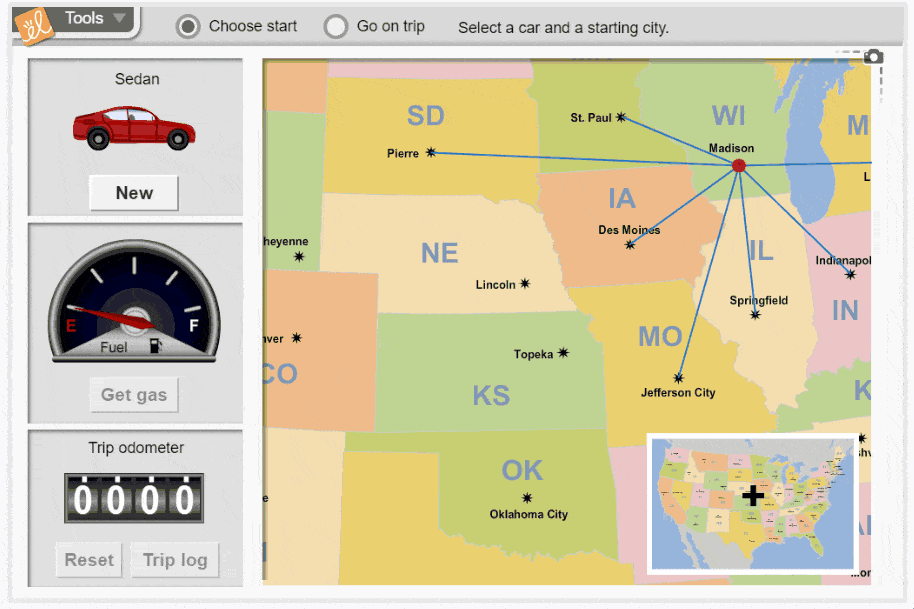
Road Trip (Problem Solving) Plan a cross-country road trip through various U.S. state capitals. First choose a vehicle to drive, and then fill up the tank with gas and go! Find the range and gas mileage of each vehicle, and discover the shortest path between two cities. Take a trip through this video for teaching tips.
Human Homeostasis Gizmo
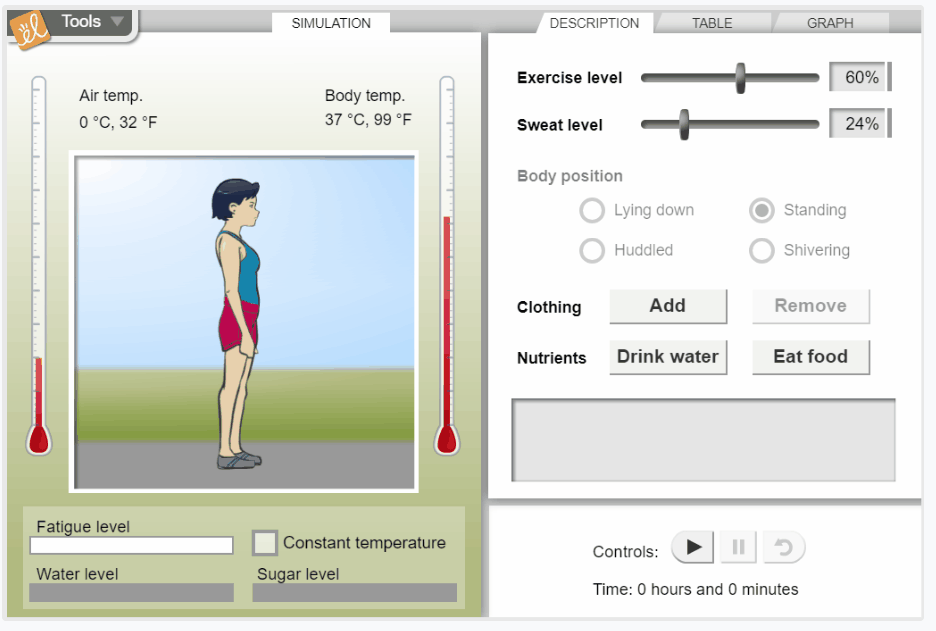
Human Homeostasis Adjust the levels of clothing, perspiration, and exercise to maintain a stable internal temperature as the external temperature changes. Water and blood sugar levels need to be replenished regularly, and fatigue occurs with heavy exercise. Severe hypothermia, heat stroke, or dehydration can result if internal stability is not maintained.
Did you know that many elementary Gizmos now have literacy connections?
With these new supplementary materials, Gizmos science lesson plans also include reading and writing skills for well-rounded, robust activities that easily allow for differentiation. Ullah and Reichbach suggested the following Gizmos for reading lessons and a cross-curricular tie with STEM education.
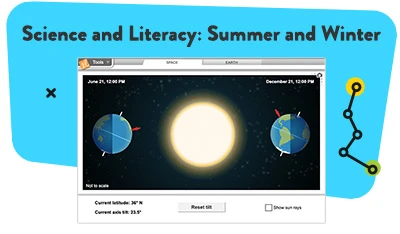
Summer and Winter Observe the tilt of Earth's axis and the angle that sunlight strikes Earth on June 21 and December 21. Compare day lengths, temperatures, and the angle of the Sun's rays for any latitude. The tilt of the Earth's axis can be varied to see how this would affect seasons.
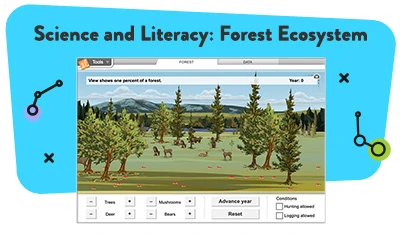
Forest Ecosystem Observe and manipulate the populations of four creatures (trees, deer, bears, and mushrooms) in a forest. Investigate the feeding relationships (food web) in the forest. Determine which creatures are producers, consumers, and decomposers. Pictographs and line graphs show changes in populations over time.
There are so many interactive learning experiences to keep students engaged during the summer months. Sign up for a Gizmos trial and set your students up for summer success instead of the summer slide.